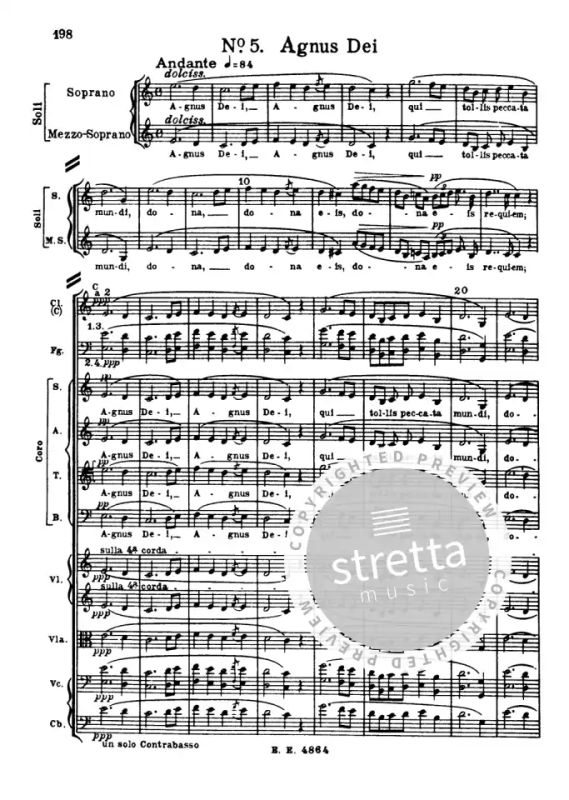

The fifth movement, “Agnus Dei,” is simple yet moving.

Throughout the Requiem, Verdi’s careful and sensual touch on the dynamics and melodic lines carries the emotion of mourning and yearning for peace. Verdi was a pioneer in contributing his operatic and adventurous style to his music and breaking musical boundaries during the Romantic Era - passionate emotions meeting the drama of life and death. The violent percussion and dramatic vocals in the explosive introduction are one of the most recognizable phrases in classical music. This Requiem includes seven movements: “Requiem,” “Dies Irae,” “Offertorio,” “Sanctus,” “Agnus Dei,” “Lux Aeterna,” and “Libera Me.” The second movement, “Dies Irae,” is the most well-known it rings a bell even to an average music listener, with nine sections in the movement lasting around 40 minutes. This brings us the Verdi Requiem we know and listen to today, with a revised version of “Libera Me” originally in the composition for Rossini. Verdi saw Manzoni as a great novelist and, more importantly, a humanitarian and leader in Italy’s movement towards unification and independence. In fact, he was constantly tweaking and playing around with the last movement, “Libera Me.” It was not until 1873 when Italian writer Alessandro Manzoni passed away that Verdi returned to completing a Requiem all by himself. However, tensions with the scheduled conductor, Angelo Mariani, and struggles with the organizing committee that abandoned the scheduled premiere marked not only an end of a friendship but also the result of an unperformed composition until 1988.Įven though the Requiem dedicated to Rossini never came to life, Verdi never gave up on composing. After Rossini died in 1868, Verdi gathered several Italian composers to collaborate on a Requiem in memory of Rossini. The inspiration began with Giuseppe Verdi’s admiration of Gioachino Rossini, a great Italian composer who made a name for his operas. The Messa da Requiem, more famously known as Verdi’s Requiem, is a Catholic funeral mass musical setting for an opera orchestra including four soloists (soprano, mezzo-soprano, tenor, and bass) and a chorus.

This week, student assistant Emily Brignand reviews the Verdi Requiem. Welcome to Feature Fridays! Each week, Music Library staff highlight an item from our collection.


 0 kommentar(er)
0 kommentar(er)
